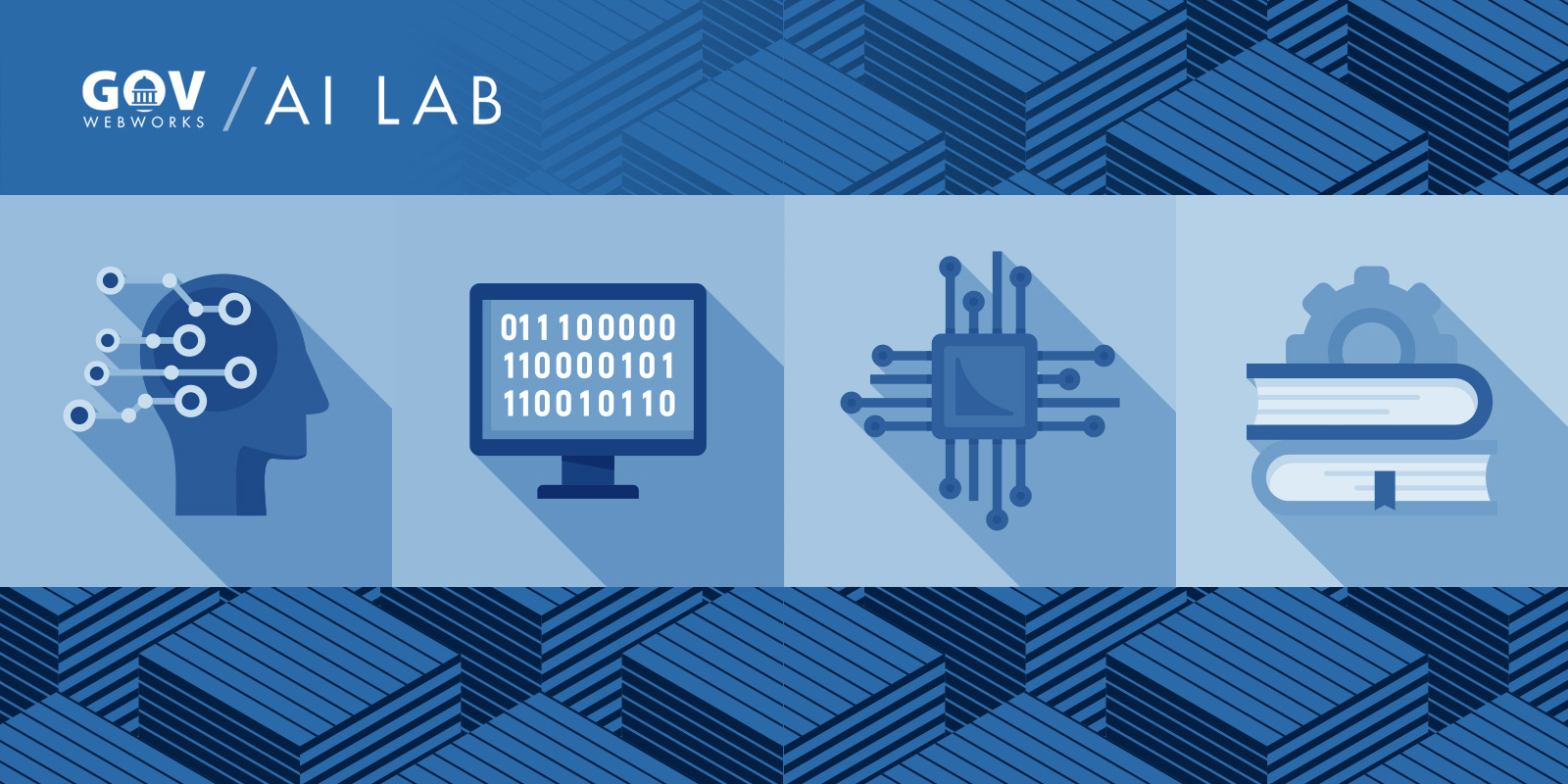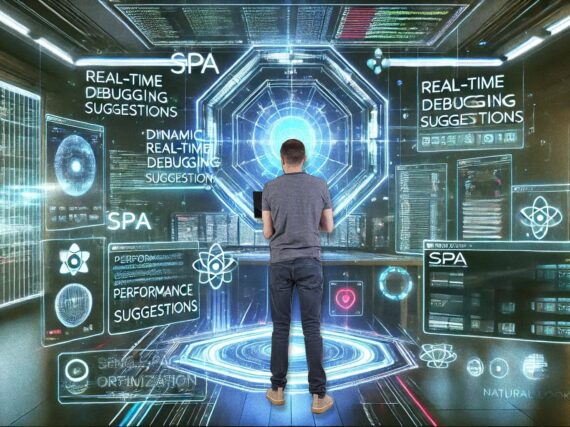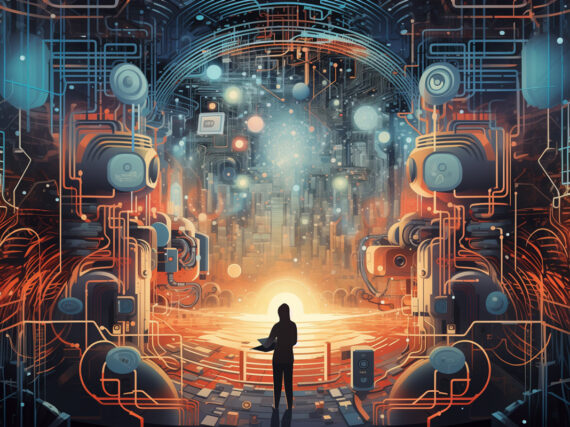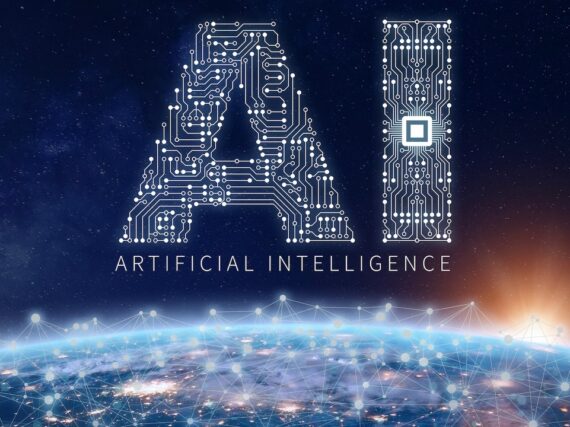Welcome to the July AI Newsletter from the GovWebworks AI Lab. The following articles touch on important topics in the industry, including:
- Google launches more AI related products and integrations
- A free Machine Learning curriculum from Microsoft
- Building custom image recognition systems for improved automation
- Microsoft continues to integrate GPT-3 into its products and services
We hope you find this information as interesting as we do. If so, feel free to share with your colleagues and encourage them to sign up for the AI Newsletter and join the conversation! Or email us at ai@govwebworks.com to talk about using AI to optimize your organization’s digital goals.
#1: Google launches more AI related products and integrations
Key takeaway: The big cloud service providers are continuing the trend of integrating AI into their SaaS and PaaS offerings.
Reviewed by Adam Kempler
A lot of new tech has been announced at Google IO this year. Some interesting AI-related items include:
- MUM (multitask unified model): Enhanced AI models to provide better search and better understanding of context, even when the context changes. Also will empower searching and providing results from multiple modalities (text, images, video, etc), and multiple languages. For example, when searching for something in English, it provides combined translated results across multiple languages. Like GPT3, it can generate content as well as “understand” it.
- LaMDA: Another cool language model, which is also somewhat similar to GPT3 in that it can do language generation. There’s a demo of it assuming the persona of the planet Pluto and one of it assuming the persona of a paper airplane, and someone asking it questions. Technologies like these have a practical application in government as low-code/no-code solutions for working with a variety of tools. Their language understanding capabilities let you use conversational input to “tell it what you want”, replacing the need for a developer to implement it for you. For example, Microsoft has started integrating GPT-3 into its Power BI product, allowing the use of natural language input to find information, replacing complex SQL-like queries.
- Firebase: Google has added AI based personalization integration into user management that can be leveraged in any apps using Firebase.
- Vertex AI: A managed Machine Learning platform to facilitate deploying and managing Machine Learning models. Ties in with Vizier which can automatically tune models for better performance.
#2: A free Machine Learning curriculum from Microsoft
Key takeaway: Even for non developers, reviewing and skimming through the material can help provide a broader overview of machine learning topics.
Reviewed by Adam Kempler
If you are interested in getting your hands dirty and want to take a deep dive into all aspects of machine learning (and aren’t afraid to do a little coding) then check out Microsoft’s new set of courses on machine learning. You’ll also be introduced to many of the common AI/ML libraries and tools in use today like NLTK, TextBlob, and Scikit-learn. The wide range of topics include:
- Machine Learning basics
- Data prep and cleaning
- Classification
- Natural Language Processing (NLP)
- Chatbots
Machine Learning for Beginners – A Curriculum
#3: Building custom image recognition systems for improved automation
Key takeaway: Features like Amazon Rekognition Custom Labels allow organizations to apply custom labels to their own images while still leveraging a model pre-trained on millions of images.
Reviewed by Adam Kempler
Amazon Rekognition is a Machine Vision PaaS (platform as a service) that provides an API allowing your organization to pass images or video to it and have it recognize and label objects, people, text, and scenes. It then returns that data so you can leverage it in your automation tasks. For example, it can add keywords and tags to images uploaded to your CMS, identify objects in video, etc. Microsoft, Google, and many others offer similar types of services.
However a new feature AWS rolled out is the ability to provide custom labels for your recognition tasks. What does this mean Well, on many of the machine vision cloud services, the models are pre-trained. This means that millions of images were reviewed and the objects in them were labeled manually. For example, a picture of a scene of a car in traffic might have objects in it with labels such as “car”, “traffic sign”, “truck”, etc. Whatever labels have been defined in the entire set of images the model was trained on would be the limit of what it could identify.
But what if you wanted to identify something specific to your use case? That’s where Amazon Rekognition Custom Labels come in. You can provide a smaller subset of images with the objects labeled with your custom labels. Amazon Rekognition then uses a process called Transfer Learning to update the existing model with your additional data. This allows you to use a large pre-trained model for better results and still have it recognize your custom labels.
Automate car insurance claims processing with Autonet and Amazon Rekognition Custom Labels
#4: Microsoft continues to integrate GPT-3 into its products and services
Key takeaway: Natural Language Processing (NLP) tools are continuing their integration into all the tools we use.
Reviewed by Adam Kempler
From email tools to Word Processors, and now even coding/development environments, NLP is quickly expanding from being the domain of chatbots and voice assistants to assisting users with a wide variety of tasks in any kind of application where they need to create some form of content.
Microsoft most recently rolled out GitHub Copilot in Technical Preview (invitation only), which provides integration with Visual Studio Code, a programming tool. Copilot essentially lets you write a description of what you want a block of code to do and it will the create the code for you in any of the supported languages such as Python and Javascript. While not always perfect, the code it generates can usually serve as a starting point for refinement and iteration. Copilot was trained on the millions of code repositories hosted on GitHub and has the Natural Language Understanding capabilities of GPT-3.
GitHub previews new AI tool that makes coding suggestions
Learn more
- Sign up for the AI Newsletter for a roundup of the latest AI-related articles and news delivered to your inbox
- Find out more about using AI to optimize your organization’s digital goals







